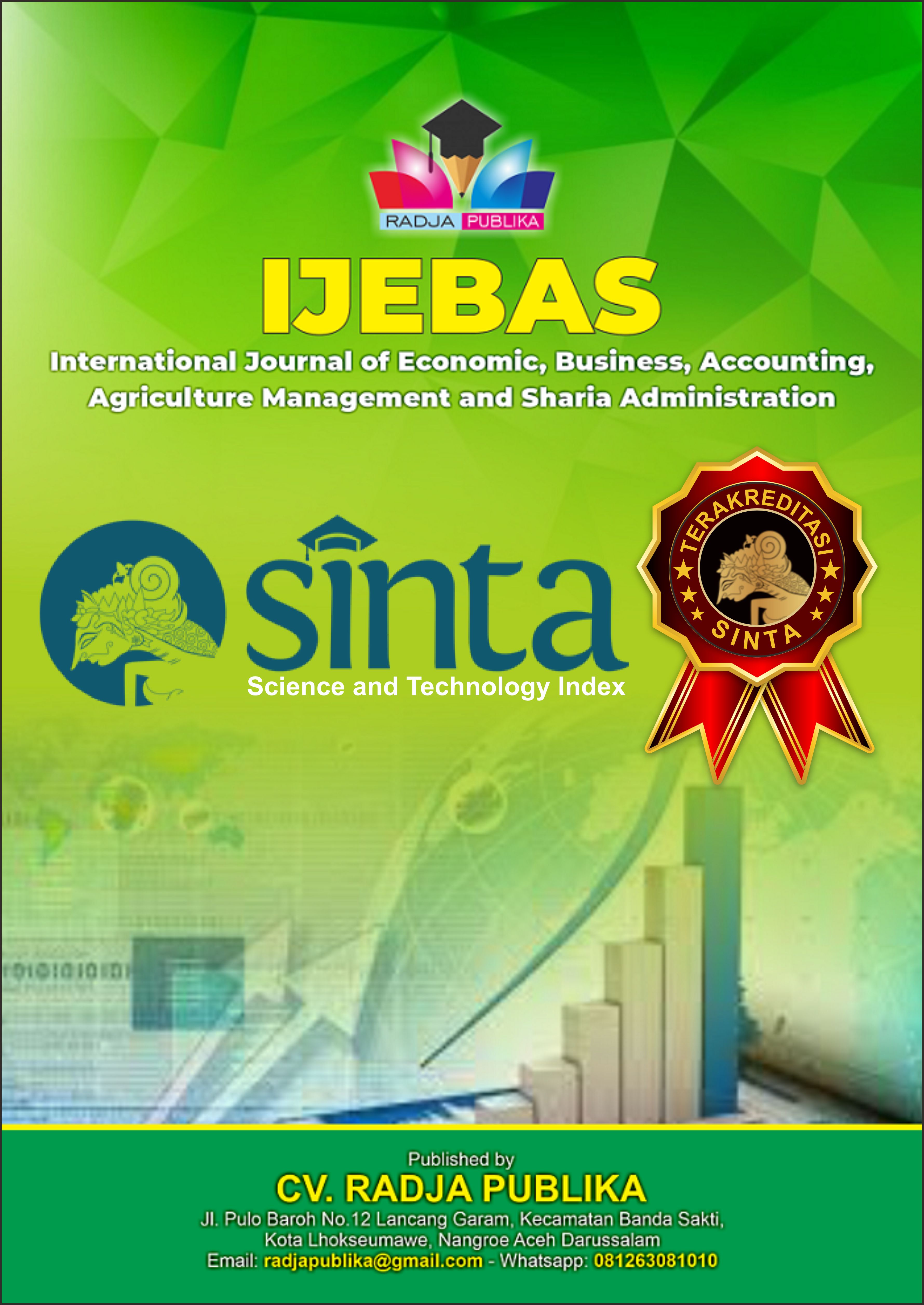UTILIZING SIX SIGMA TO MINIMIZE DEFECTS IN GAMIS AND TUNICS PRODUCTION AT MOOI CLOTHING LINE
DOI:
10.54443/ijebas.v4i6.2289Published:
2024-12-30Downloads
Abstract
The fashion industry in Indonesia plays a critical role in the country’s economy, contributing significantly to employment and creative exports. However, recurring production defects, including uneven seams, fabric tearing, improper sizing, and missing buttons, present significant challenges for garment manufacturers such as MOOI Clothing Line. These quality issues not only increase operational costs through rework and waste but also threaten customer satisfaction and market competitiveness. This research aims to analyze and address the root causes of production defects using the Six Sigma DMAIC (Define, Measure, Analyze, Improve, Control) methodology.The study begins with the identification of critical defects at MOOI Clothing Line, where Pareto analysis reveals that uneven seams account for over 33% of total defects, making it the top priority for improvement. Through the Measure phase, Statistical Process Control (SPC) and process capability analysis are employed to assess defect trends and production stability. Results show that MOOI's current sigma level is approximately 3.17–3.55, highlighting the need for process improvement to meet the company's target of reducing defects to a maximum of 2%.Root cause analysis, conducted using Fishbone Diagrams, identifies critical factors such as inefficient workflow systems, lack of standardized quality control procedures, and insufficient operator training as primary contributors to defects. To address these issues, the research proposes an improved production workflow that segments sewing tasks by garment components (e.g., collars, sleeves, body parts), ensuring greater consistency and reducing variability. Additionally, the implementation of interim quality control checkpoints before final assembly enables early defect detection, minimizing rework and production inefficiencies.Further recommendations include enhancing operator skills through structured training programs, implementing robust Standard Operating Procedures (SOPs) for quality control, and introducing systematic defect documentation to monitor recurring issues. By fostering a culture of continuous improvement and leveraging Six Sigma tools, MOOI Clothing Line can significantly reduce defect rates, improve operational efficiency, and enhance customer satisfaction. The results of this research provide practical insights for garment manufacturers facing similar challenges and emphasize the importance of structured quality management systems in achieving sustainable production standards.
Keywords:
Six Sigma, production defects, quality control, DMAIC.References
Aized, T. (2012). Total Quality Management and Six Sigma. Springer.
Ali, M., Chaudhry, A., & Sani, M. (2021). Consumer purchasing decisions: Quality vs price. International Journal of Business Trends, 15(4), 112-125.
Chang, C., & Cheng, H. (2018). Reducing defect rates in manufacturing: A case study. Journal of Industrial Engineering, 29(2), 45-57.
Dietrich, M., & Wanzenried, G. (2011). Technological adoption in garment manufacturing. Manufacturing Systems Journal, 24(1), 56-71.
Firmansyah, Y., & Sutrisno, T. (2023). Quality management practices in the Indonesian fashion industry. Asian Journal of Fashion Technology, 14(3), 98-115.
Fursule, N., Bansod, S., & Fursule, S. (2012). Understanding Six Sigma: A conceptual framework. International Journal of Management and Business, 6(1), 10-15.
Heizer, J., & Render, B. (2011). Operations Management (10th ed.). Pearson.
Hekmatpanah, M., Sadroddin, M., & Shahbaz, J. (2008). Analyzing Six Sigma effectiveness: A practical approach. International Quality Journal, 19(4), 221-234.
Hsiao, L., & Hsu, M. (2022). Financial impact of defects on fashion companies. Journal of Financial Operations, 12(6), 77-90.
Kang, L., & Kvam, P. (2011). Statistical process control: Theory and applications. Journal of Statistical Methods, 8(3), 134-150.
Kurniawan, A., & Widodo, J. (2023). Challenges in Indonesian garment manufacturing: Defect rates and solutions. Journal of Textile Production Research, 18(2), 65-80.
Kusmayadi, E., Rachmat, H., & Kurniawan, R. (2018). Environmental impact of defective products in the fashion industry. Sustainable Manufacturing Review, 11(1), 40-55.
Montgomery, D. C. (2009). Introduction to Statistical Quality Control (6th ed.). Wiley.
Oakland, J. (2003). TQM: Text with Cases (3rd ed.). Routledge.
Powell, L., & Bonnici, T. (2015). Pareto principle applications in quality management. Journal of Productivity Analysis, 32(2), 88-100.
Pyzdek, T. (2003). The Six Sigma Handbook: A Complete Guide for Green Belts, Black Belts, and Managers at All Levels. McGraw-Hill
Putri, R., & Rahman, T. (2024). Reducing operational costs through improved quality control. Journal of Business Efficiency, 21(1), 12-25.
Santoso, A., Nugroho, B., & Tanjung, H. (2023). Small and medium enterprises in Indonesia's fashion industry. SME Review Journal, 15(4), 47-60.
License
Copyright (c) 2024 Sultansyah Ilham Ramadhan

This work is licensed under a Creative Commons Attribution-ShareAlike 4.0 International License.







